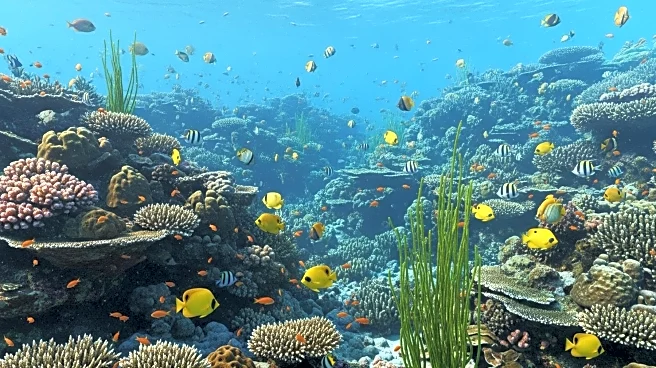What's Happening?
Recent research has highlighted that the global trade in marine aquarium fish is predominantly reliant on wild populations, with a significant portion of these fish being sold in the U.S. The study, led by Dr. Bing Lin from the University of Sydney, found that approximately 90% of marine fish sold by major U.S. aquarium e-retailers are sourced from the wild, primarily from the western Pacific and Indian oceans. This includes species listed as threatened or endangered by the International Union for the Conservation of Nature. The research underscores the opaque nature of the supply chain, which often leaves consumers unaware of the origins of the fish they purchase.
Why It's Important?
The findings of this study have significant implications for marine conservation efforts. The reliance on wild-caught fish for the aquarium trade poses a threat to marine biodiversity, as it can lead to the depletion of wild populations and disrupt ecosystems. The study calls for stronger traceability and oversight of the supply chain, as well as increased consumer awareness. Implementing credible eco-certification schemes could help ensure that fish are sustainably sourced, thereby protecting marine biodiversity while supporting local economies that depend on well-managed fisheries.
What's Next?
The study suggests that greater support for sustainable fisheries and the implementation of eco-certification schemes could help mitigate the impact of the aquarium trade on wild fish populations. Additionally, increasing consumer awareness about the origins of aquarium fish and promoting the use of aquaculture could reduce the pressure on wild populations. These measures could contribute to the conservation of marine biodiversity and the sustainability of the aquarium trade.











